C.Z. Guest
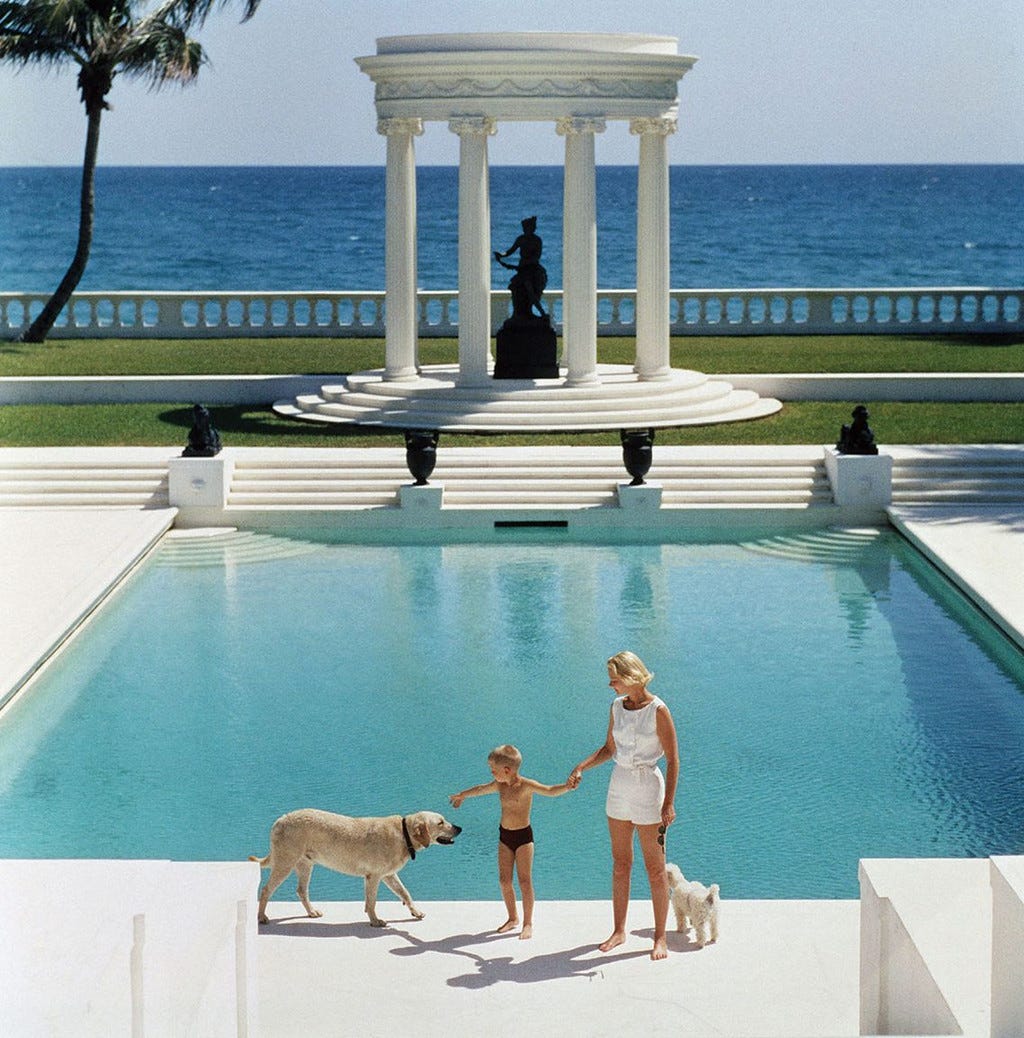
C.Z. Guest, born Lucy Douglas Cochrane on February 19, 1920, in Boston, Massachusetts, was an American socialite, author, columnist, and fashion icon. She was known for her impeccable taste, timeless style, and sharp wit.
Her mother was Vivian Wessell, a member of the prominent Douglas family of Massachusetts, while her father was Alexander Lynde Cochrane, an investment banker who belonged to a family of the so called “Boston Brahmins”, the WASP elite of Boston.
Her brother Alexander Lyman Cochrane used to call her "Sissy" and she transformed that into "C.Z.": she embraced the nickname, and it became an essential part of her persona.
She went to school in Aiken, South Carolina, at Fermata (a now defunct, very exclusive, girls boarding school).
Once out of school, she briefly dated the actor Victor J. Mature, who was stationed in Boston during the war, appeared in a cabaret show, worked as a showgirl on Broadway — a job given her by the theatre producer Lee Shubert — and signed a seven-year contract with 20th Century-Fox.
When her Hollywood career lagged, she whipped down to Mexico, met artist Diego Rivera and eventually posed for the now legendary nude painting which was hung over at Ciro’s, a bar at Mexico City’s Hotel Reforma.
“Who could have imagined that lurking inside this cool vanilla lady was a madcap, laughing tomboy? Well, I suppose anyone who knew her background: a trimly, tautly brought up Boston girl, the daughter of a Brahmin, she left society for stage, films and, finding no satisfaction there, went adventuring in Mexico, where Diego Rivera painted her, aged 22, as a honey-haired odalisque desnuda, a famous portrait that, according to legend, adorned a bar in Mexico City.”
— Truman Capote

As Capote said, “all this was fun, but not really what she wanted”, adding:
“Oh, it must have been fun — but at heart she was too conservative, too countrified for all that — she needed a home and a husband and dogs and horses and children (in that order) and flower gardens and vegetable gardens; and when she met the right man, the very massive but very gentle Winston F.C. Guest, she got them: houses, with gardens galore, in Old Westbury, Middleburg and Palm Beach.”
In 1944, once back in New York from Mexico, Lucy “C.Z.” met Winston Frederick Churchill Guest, a cousin of Sir Winston Churchill and a wealthy polo player (he was a three-time Polo world champion), who had recently divorced from Woolworth heiress Helena McCann.
"I was absolutely crazy about him. My God, he was devastating.”
Winston was the son of British-born American polo champion Frederick E. Guest and his wife, Amy Phipps Guest, a heir to the Phipps steel fortune and aunt of Nonie Phipps, whom we previously covered in the Adorable Story #6.
Lucy and Winston eventually married on July 7, 1947 in Havana, Cuba (Ernest Hemingway was the best man), and thus Lucy Douglas Cochrane finally became “C.Z. Guest.”
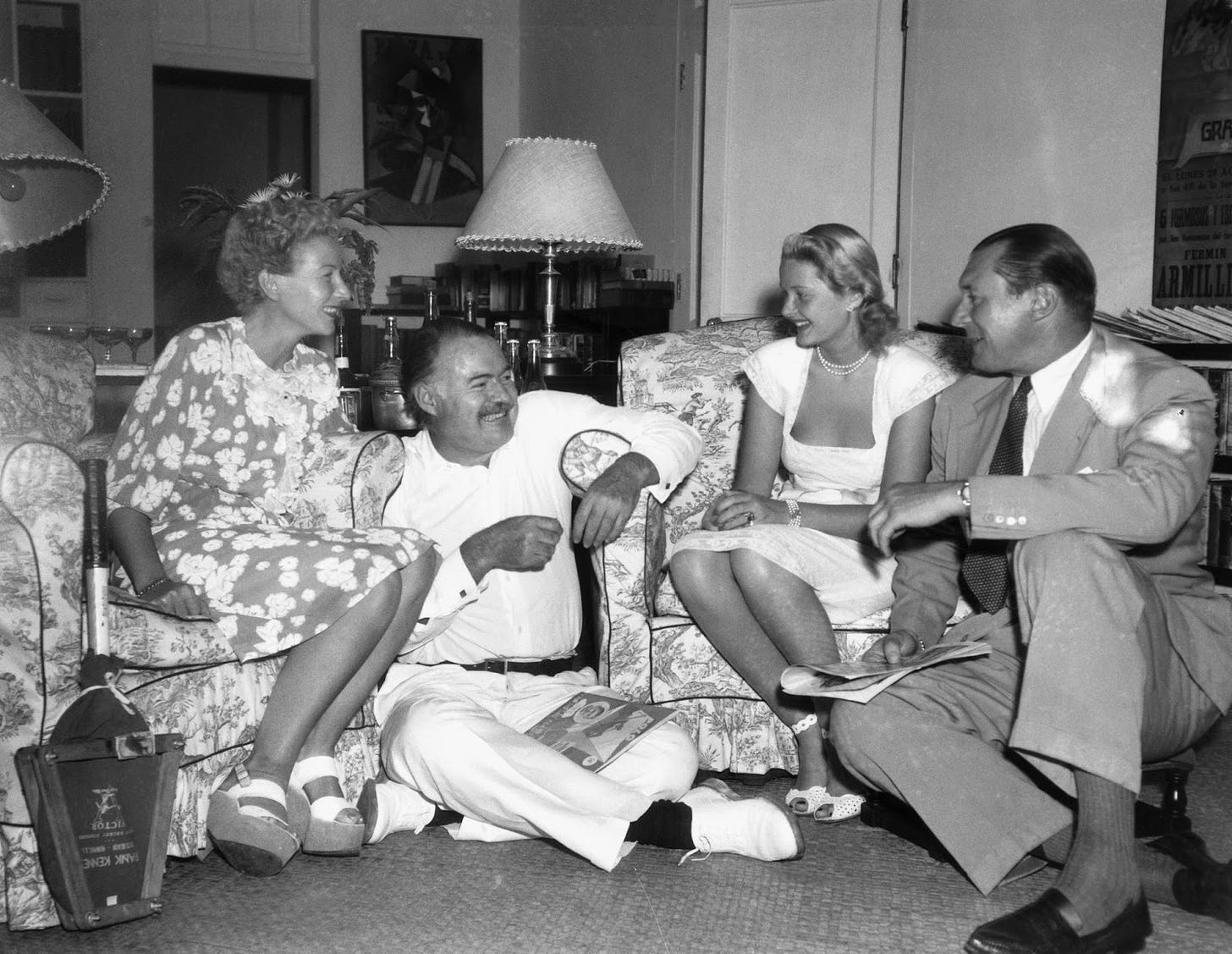
After marrying in 1947, the couple divided their time between their two residences: the beautiful, ocean front, Villa Artemis in Palm Beach, Florida (the very first photo at the beginning of this Adorable Story), and the Templeton estate in Old Westbury, Long Island, New York (photo below).
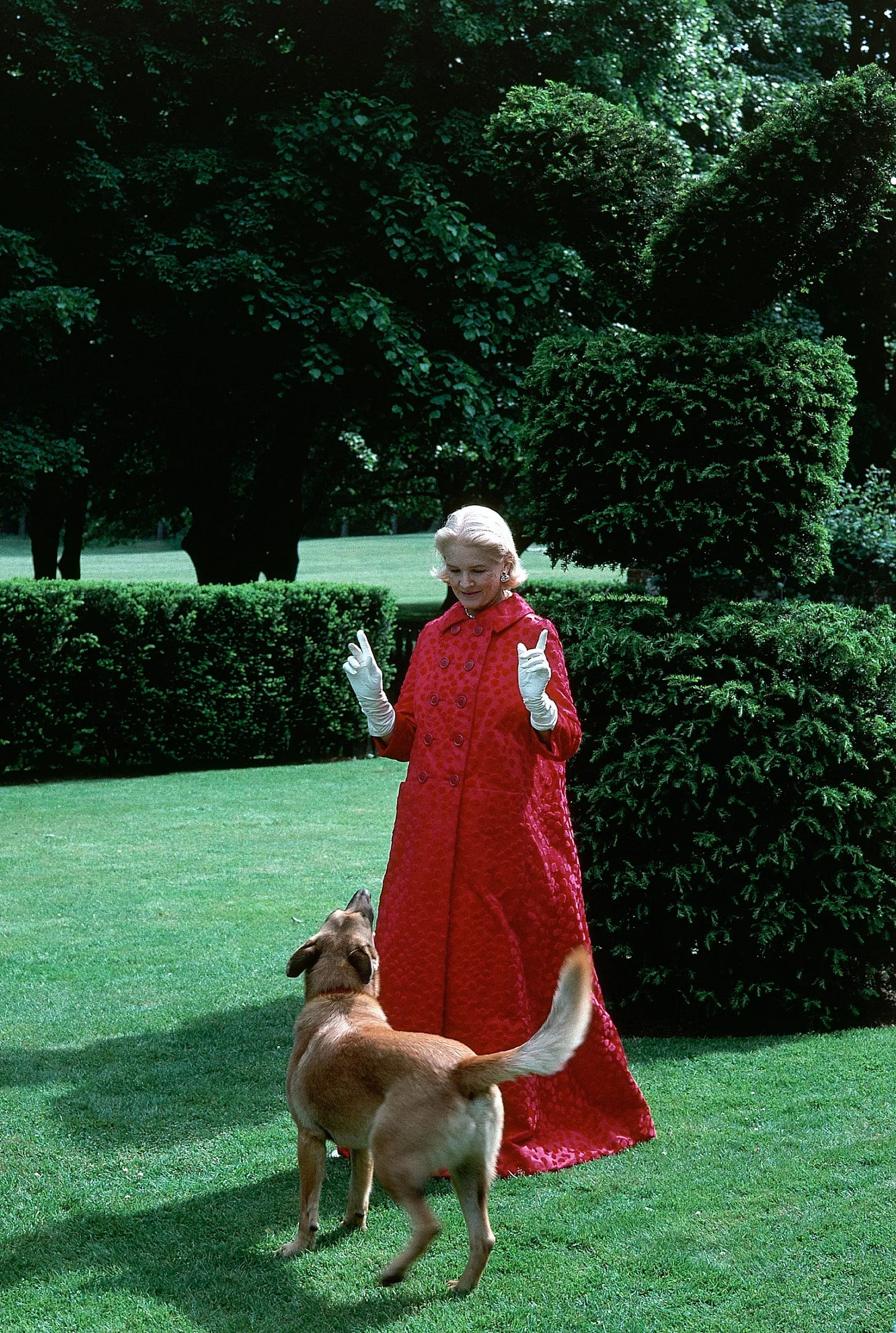
The couple had two children: Alexander (born in 1948) and Cornelia (born in 1963).
C. Z. Guest was considered one of America's classic beauties. The writer Jill Gerston once described her this way:
“With her pale skin, blue eyes, ash-blond hair and trim figure, she is cut from the same cool, silky cloth as Grace Kelly. It is a patrician beauty that is indigenous to socially registered enclaves like Palm Beach and Southampton, a sporty, outdoorsy look that eschews makeup, hairspray and anything trendy. She has an outspoken, coolly self-assured manner and a throaty, well-modulated voice with a trace of a British accent.”
The Salvador Dalí Connection
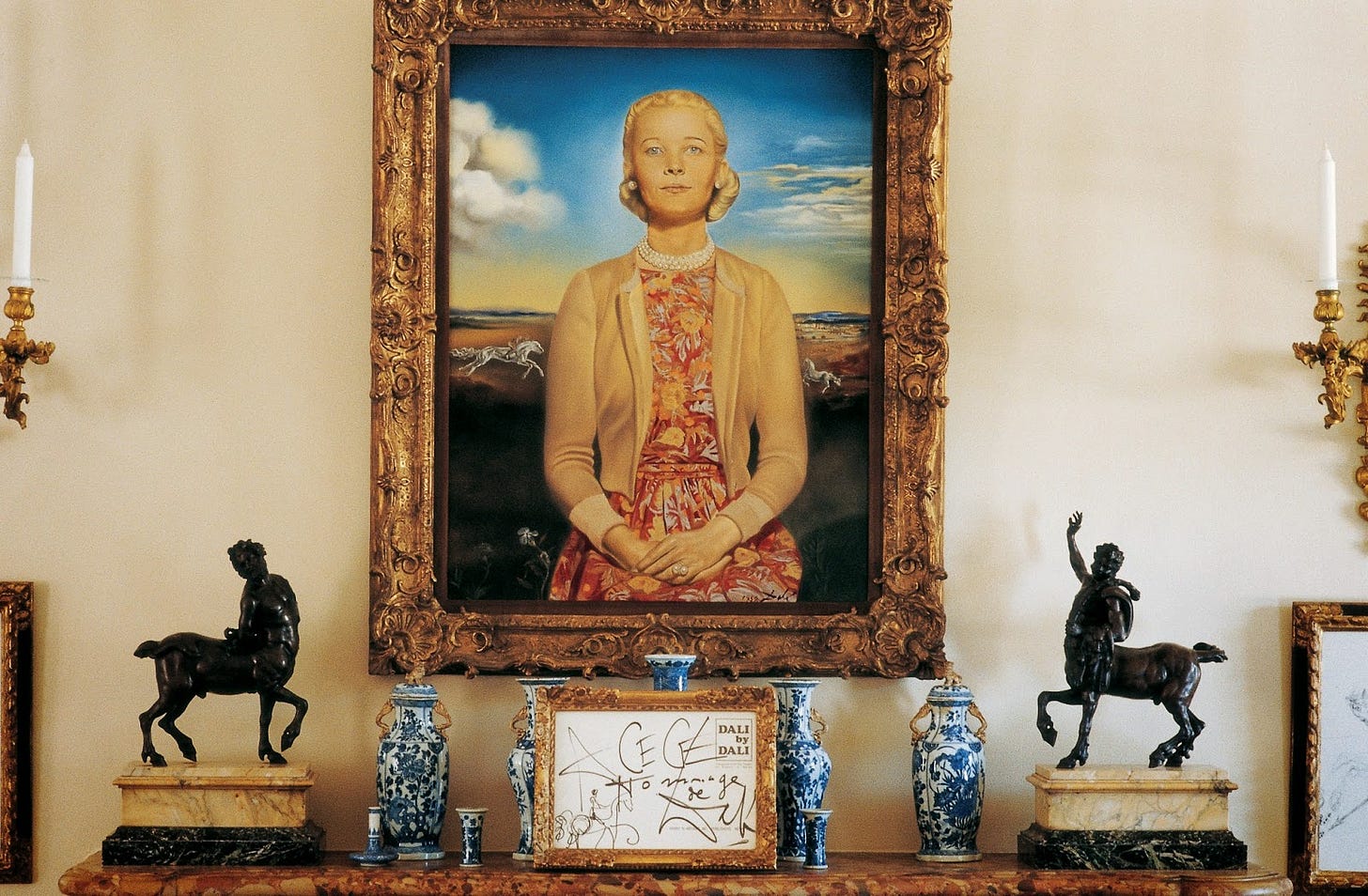
In 1958, C.Z. Guest was the subject of a portrait by the renowned surrealist artist Salvador Dalí.
The painting, titled “Portrait of C.Z. Guest,” features the socialite wearing a flowery red dress, while sitting in front of a dreamlike, surrealist landscape with two white horses galloping.
The Truman Capote Black and White Ball
“As Raymond Chandler remarked of his femme fatale in “The Long Goodbye”: “There are blondes, and then there are blondes.” Mrs. Guest, shimmering in the blue smoky light, was one of the latter. Her hair, parted in the middle and paler than Dom Perignon, was but a shade darker than the dress she was wearing, a Mainbocher column of white crepe de chine. No jewelry, not much makeup; just blanc de blanc perfection.”
— Truman Capote
C.Z. Guest was one of the guests at Truman Capote's famous Black and White Ball in 1966. Held at the Plaza Hotel in New York City, the ball was an invitation-only event, with the guest list featuring the who's who of the time. C.Z. Guest was seen wearing a black and white ensemble that perfectly encapsulated her sophisticated yet playful sense of style.
“The torrent of guests poured into Capote’s receiving line two-by-two — like bedizened animals jaunting onto the Ark — while a voice from the heavens announced their names to cheers and faints and whispers. Inside, 450 bottles of Taittinger popped in unison (flowing, according to actress C.Z. Guest, “like the Nile”), before unlikely dance partners swirled and eddied across the marble floor to the swing of Peter Duchin’s big band (“Everybody, no matter how rich or sophisticated, was rubbernecking” remembered Aileen Mehle). An impromptu game of American football broke out with economist John Kenneth Galbraith’s silken top hat as the pigskin; Frank Sinatra beat his fists on the table and demanded twenty bottles of Wild Turkey bourbon; a satin-gloved fist fight broke out over the rumblings of the Vietnam War; masks were cast aside, marriage proposals extended, celebrities concocted; and Capote stood in the half light, at once a proud parent and a saucer-eyed child, in gentle awe at his creation.”
— Joe Bullmore
An (Unexpected) Passion for Gardening
C.Z. Guest's interest in horticulture began when she was a child following the family gardener around her parents' estate on the North Shore of Boston.
In 1976, when her husband Winston lost a good chunk of his fortune in an eponymous airline that never got off the ground, his “Little C.Z.” went to work at full gallop, writing a syndicated gardening weekly column that appeared in 350 newspapers across the US, authoring books on gardening (the first of which, aptly named “First Garden”, was illustrated by Cecil Beaton and had an introduction by her “dear, dear friend” Truman Capote) and she even started selling her very own “C.Z.’s Bug Spray”.
In his introduction to her first gardening book, Capote described C.Z. working in her garden:
“There, with her baskets and spades and clippers, and wearing her funny boyish shoes, and with her sunborne sweat soaking her eyes, she is a part of the sky and the earth, possibly a not too significant part, but a part.”
Embarking on a writing career relatively late in life, she was also the author of a children's book, “Tiny Green Thumbs.”
She divided her life between her horses and dogs (quite surprisingly, she was apparently allergic to both, and for this reason she was often photographed wearing gloves even at home), and her children and grandchildren.
With her easy garb, blue eyes — and that blonde hair — she defined an American style of which Grace Kelly was just the movie adaptation: indeed “it was Grace Kelly who had her looks,” once observed Vanity Fair contributing editor Reinaldo Herrera.
Her husband Winston died on October 25, 1982, at the Nassau Hospital in Mineola, New York.
After battling cancer for some time, C.Z. died on November 8, 2003, in Old Westbury, New York, at the age of 83: a friend was driving her to the hospital after she experienced breathing difficulties at home.
— Alberto @






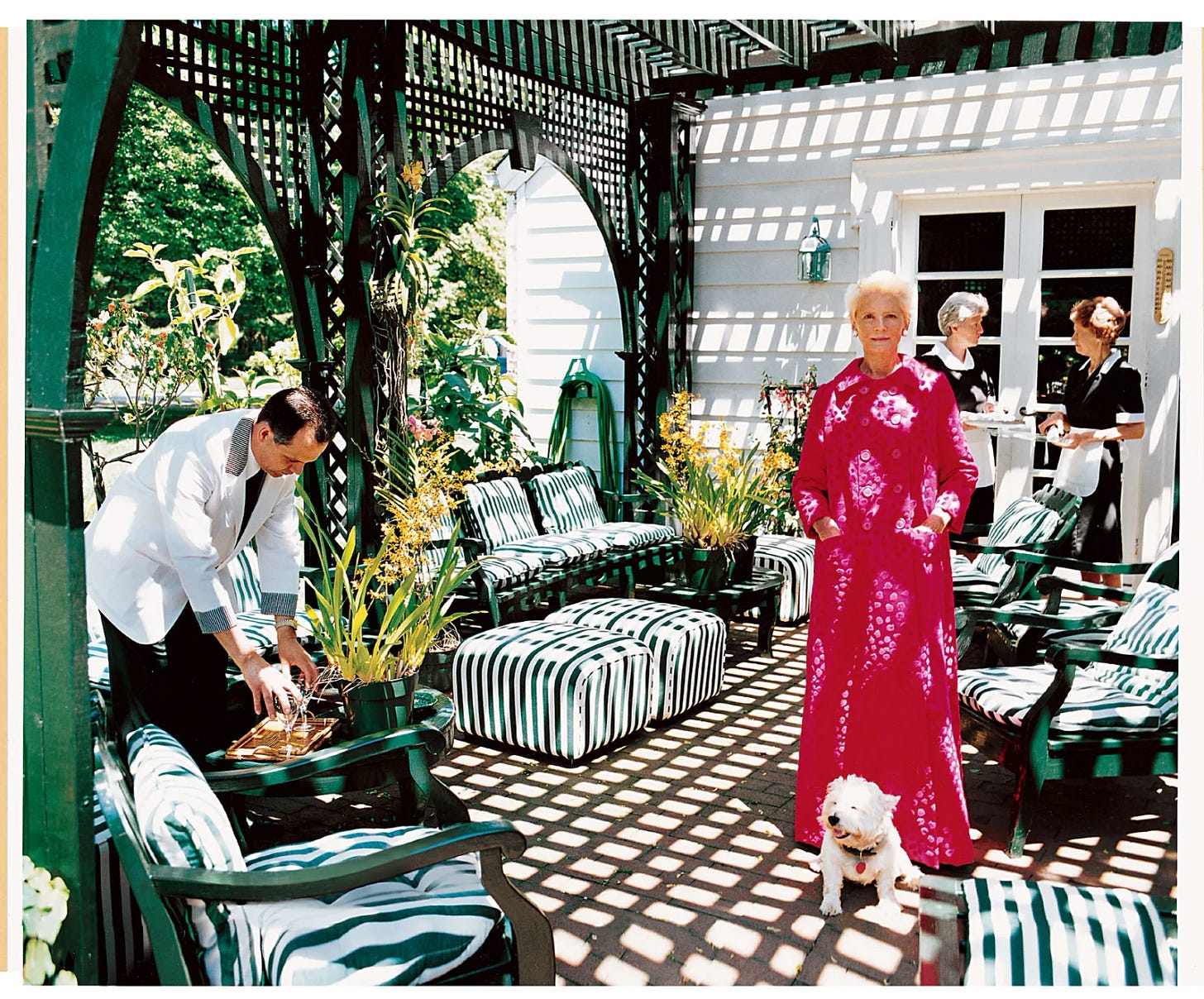
I really want a copy of Diego Rivera nude of cz. Any idea where
My gosh! She really looks like Grace Kelly, both were unbelievable beautiful.